GT Academy: What It Takes To Go From Gamer To Real-Life Racer
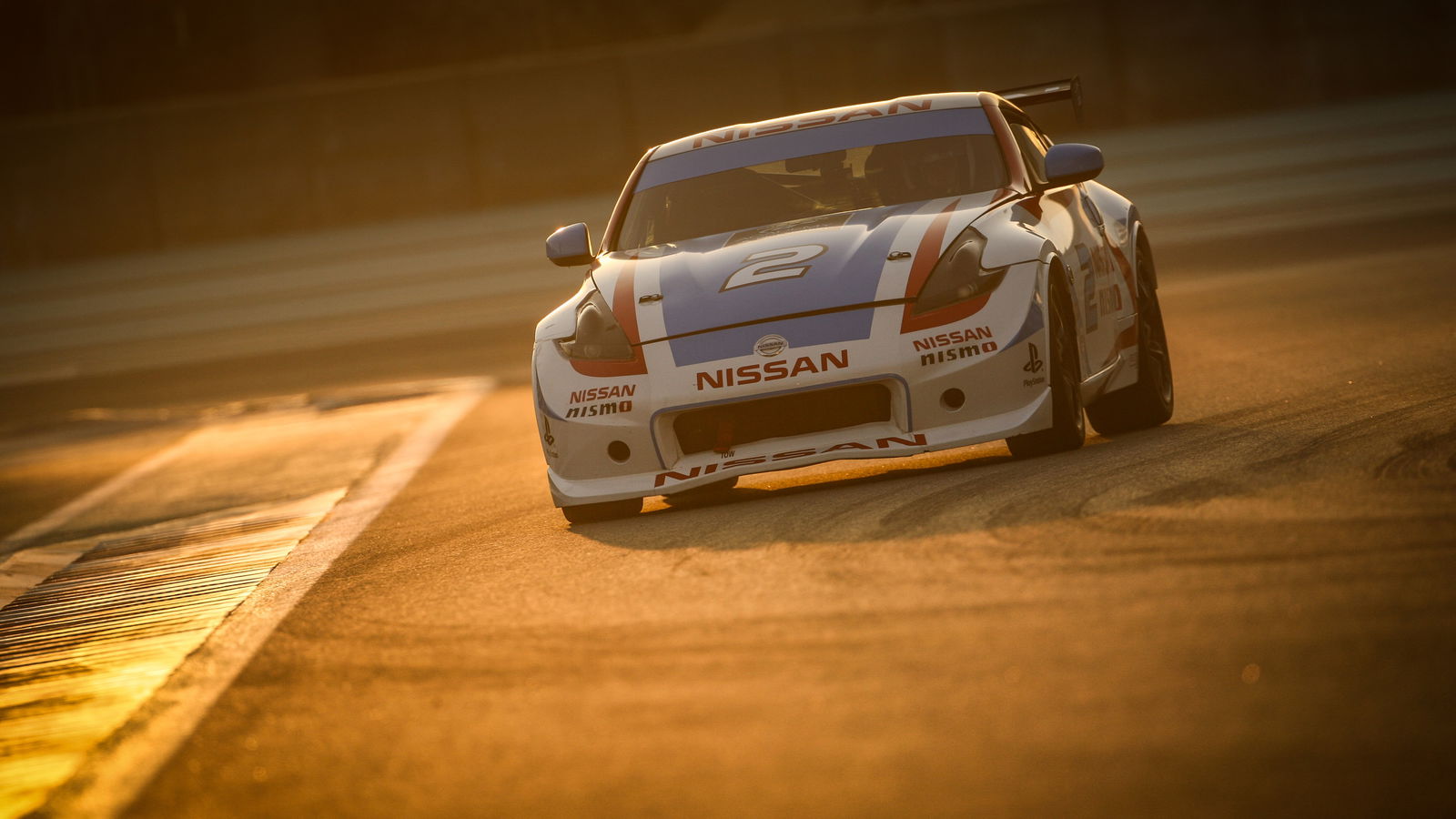
I’m sitting in the back of a Nissan Patrol, holding on for dear life as our highly talented if mildly psychotic driver blasts across sand dunes, my exposed legs turning to ice as the air conditioning blasts freezing cold air around the cabin. Former F1 racer Max Chilton is beside me, chatting about the fun of driving off road as our wheelman keeps his foot in. The four-wheel drive system scrabbles for non-existent grip; momentum is your only friend out here.
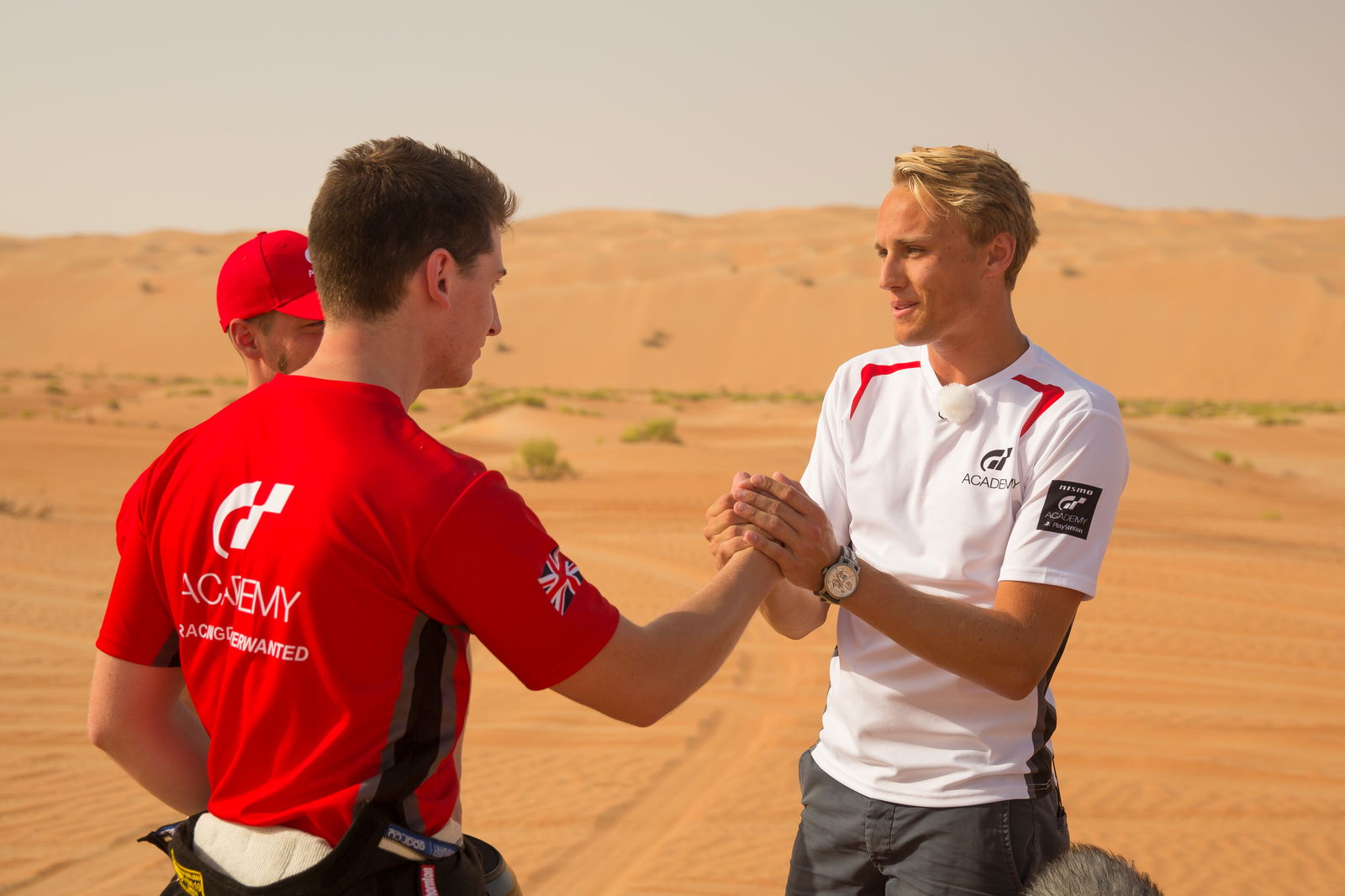
We’re in the desert, somewhere near the border between the United Arab Emirates and Saudi Arabia, around 200 miles south of our base in Abu Dhabi - we haven’t seen civilisation since we exited the oil-rich emirate. The vast emptiness of the desert is awe-inspiring, but it’s hard to concentrate on how insignificant this landscape makes you feel since the Patrol is being hammered across the fine sand. A cameraman behind me sounds like he might be about to throw up.
And then we arrive at our location, open the door, and that’s when it hits you. The heat out here is indescribable. It’s like stepping in front of an open fan oven, and it literally takes your breath away. The moment you exit the vehicle, the heat begins to sizzle the hairs on your arms, and sweat starts oozing from every pore. Even standing still takes effort, yet stood before me are a group of young men in full race suits. Until a week ago, they were nothing more than Gran Turismo gamers; today, they’re braving 40-degree heat to race dune buggies across the desert.
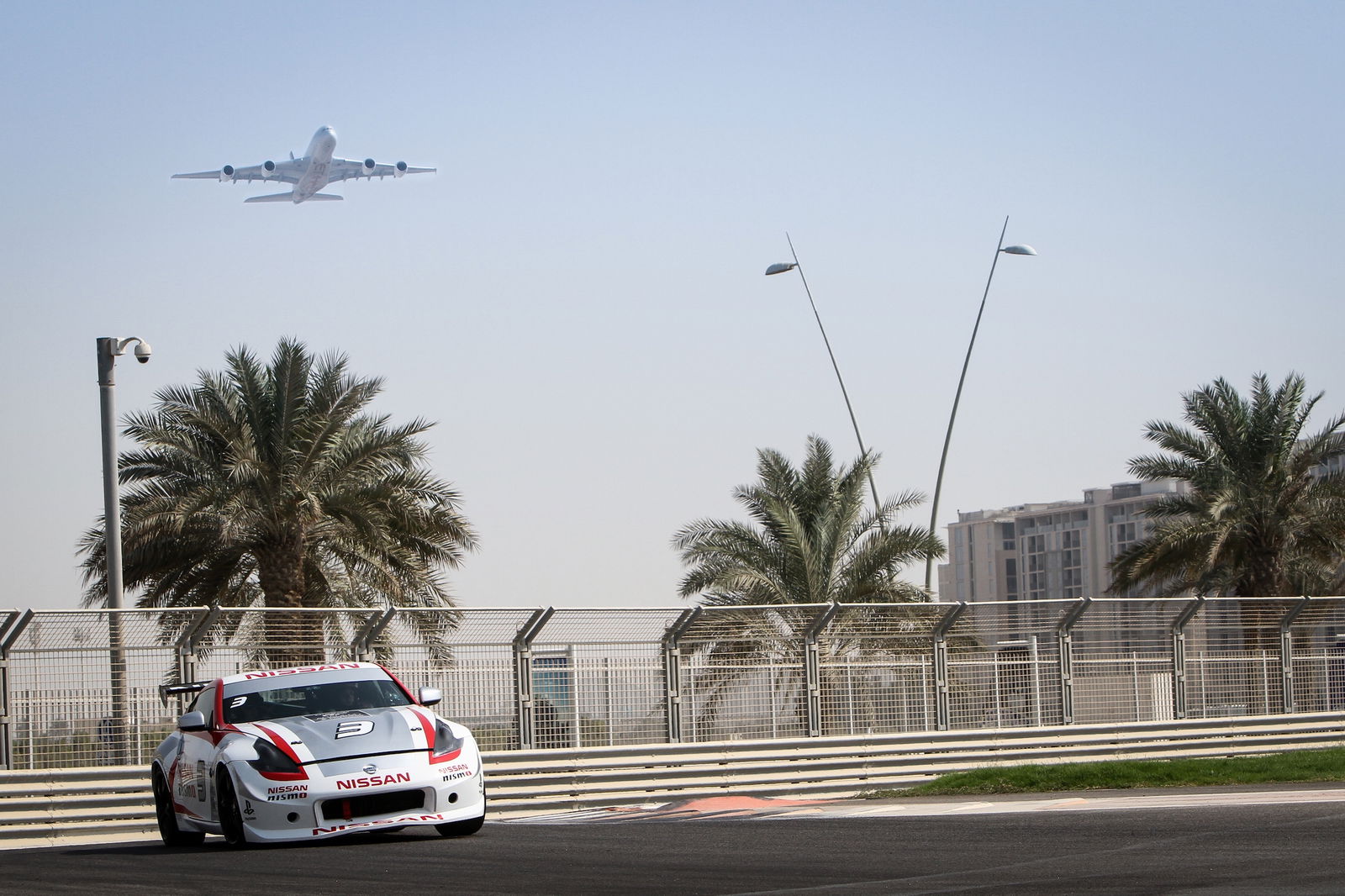
The reason I’m in the desert is because I’ve flown to Abu Dhabi to join the European GT Academy finalists as they bid to become bona fide racing drivers. Each region starts the competition with eight competitors, and upon my arrival, each is down to just three. I’ve joined up with the British team on the sixth day of a gruelling regime, in which the gamers have had their driving ability, physical prowess and mental aptitude tested - and the pressure is only increasing.
So let’s recap. After just one day acclimatising to the intense heat, everyone was shipped out into the desert and sent into an extremely challenging fitness test, which involved running across difficult terrain, overcoming obstacles and swimming through cold water. This was the first real competition, and the first elimination round, with those either not finishing or lagging behind being sent home.
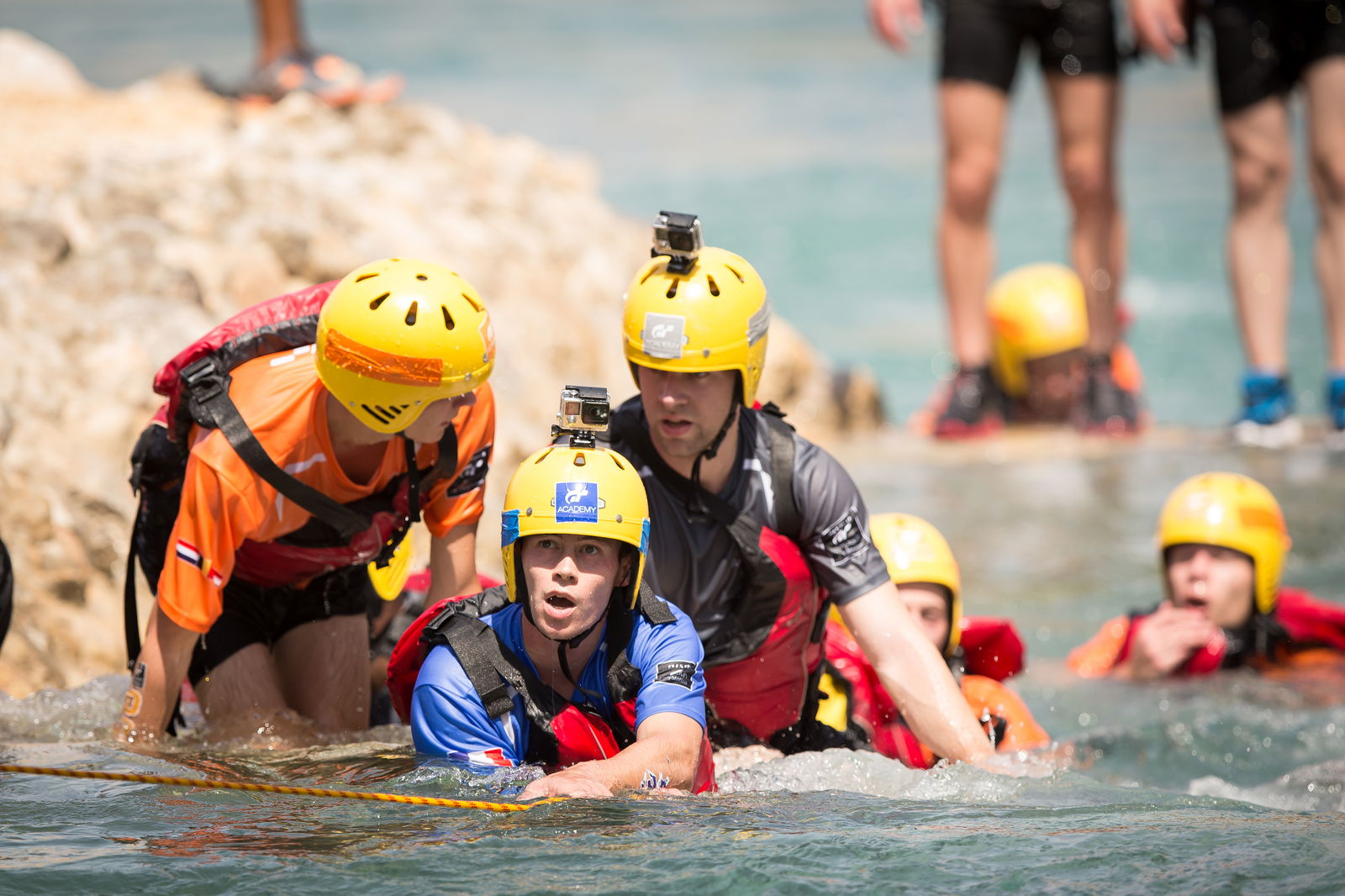
It’s a real bone of contention with many competitors, and whenever I discuss race camp with Academy hopefuls, the most common complaint is that some drivers were sent home before getting the chance to strut their stuff on track. Later, in an interview just before the big final, Head Judge Rob Barff claimed he’d rather take an unfit driver with a knack for driving than try to turn an Olympian into a racing driver, which I’m sure will only lend weight to the competitors’ frustrations.
Still, some disagreed that it was harsh. Mathieu Thornton, the second placed Brit, told me “I had done my best to prepare for this challenge so it wouldn’t be me [getting kicked out] and I managed to avoid elimination. I knew the physical challenge would have a big bearing on the competition judging by previous editions of GT Academy, so it didn’t come as too much of a shock to me.”
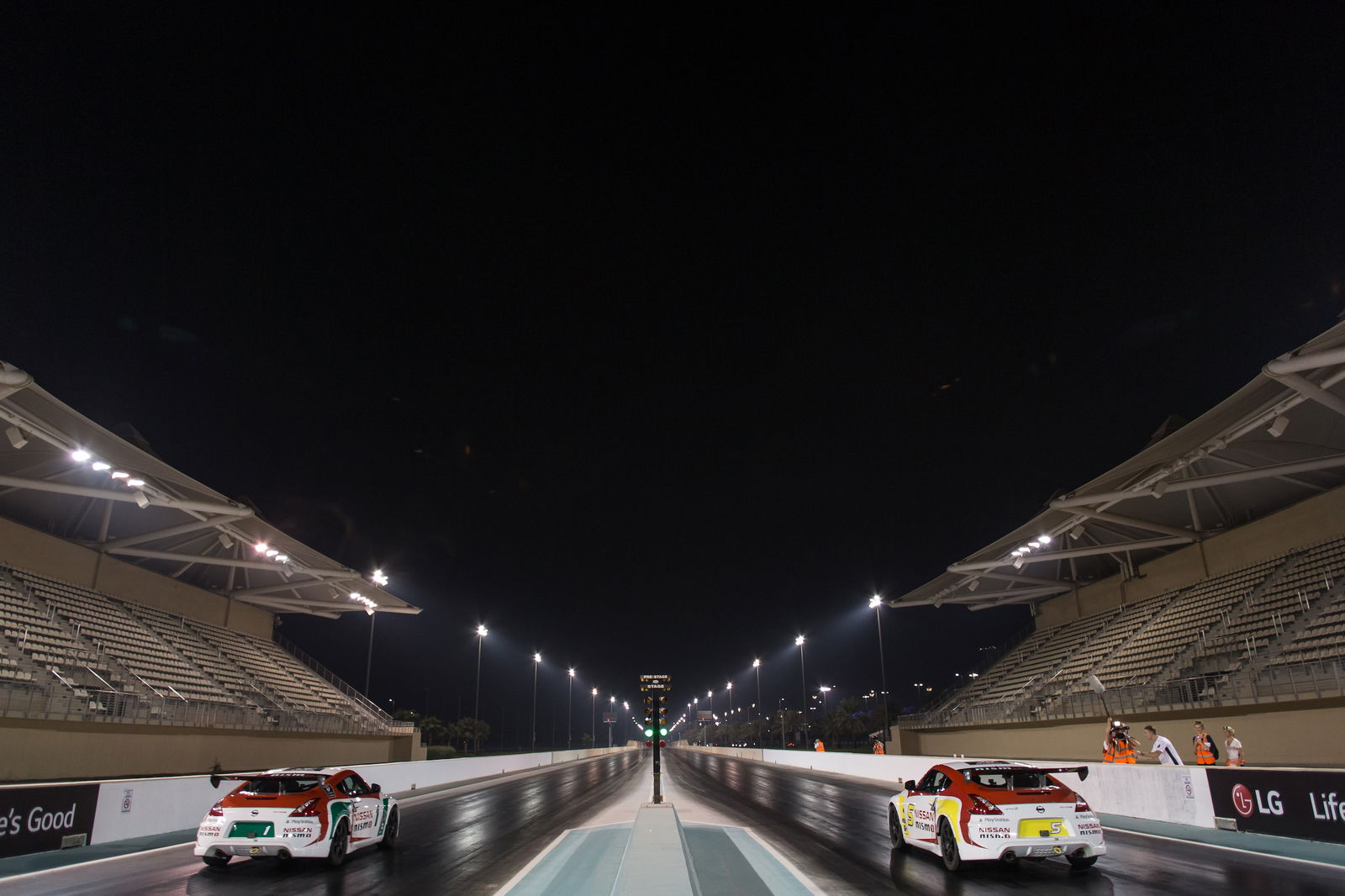
The guys had had a chance to show off their car handling skills in a Nissan Juke wearing ultra-low grip wheels at the rear, but the first real test of their mettle came in the form of a night-time drag race. Each driver was given the keys to a Nissan 370Z Nismo race car, and faced off against other drivers from their region.
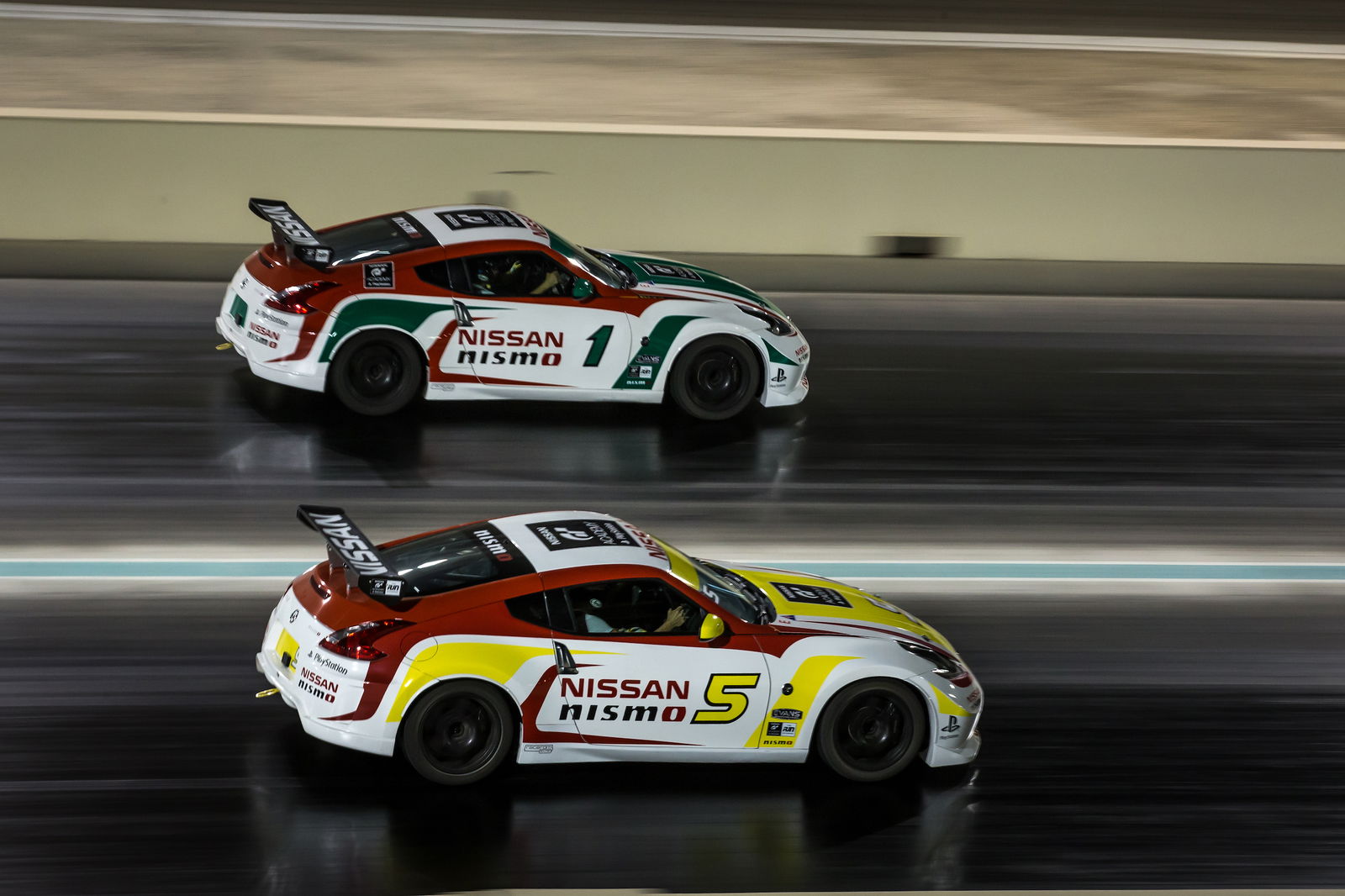
This was another elimination round, and another contentious moment for drivers, who felt that a drag race was a harsh way to kick people out; one missed gear could cost you your dream. I can see both sides of this. Firstly, yes it does imitate the fact that you could make a mistake and lose a race in the real world, but it seems a shame to punish drivers with real potential for making one mistake before they even get a chance to prove their worth on track.
With more drivers culled from the competition, the remaining competitors were taken to the so-called Bridge to Nowhere. Officially named Hodariyat Bridge, it links Abu Dhabi with Hodariyat Island, which is currently completely empty; it’s due to be the site of a vast housing network, but at the moment the 1.3-kilometre bridge leads to a dusty expanse of nothingness. Perfect for street racing, then.
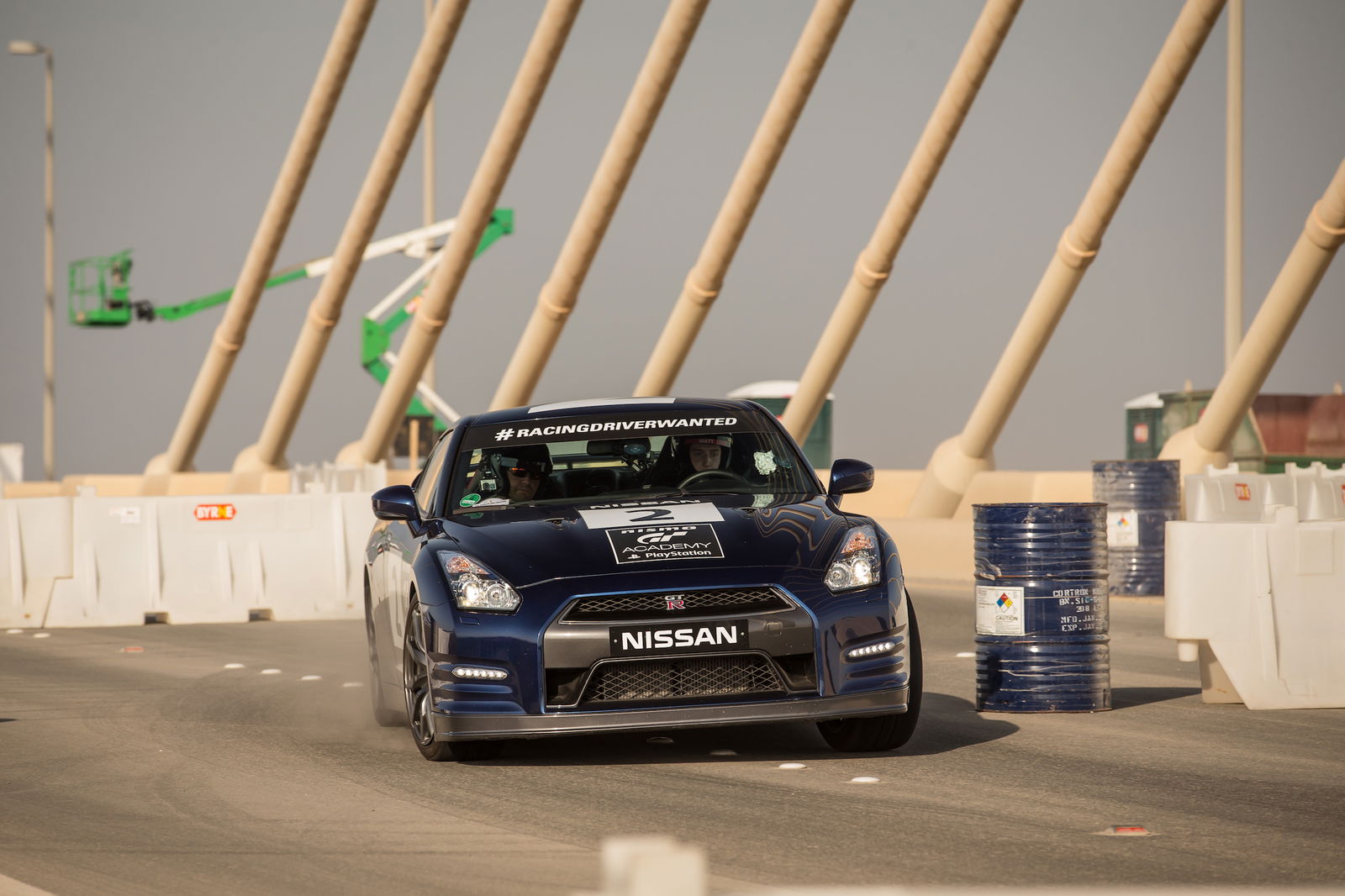
A course was laid out on each side of the divider, with drivers now stepping up to a Nissan GT-R. This was a good chance for the judges and mentors to really get a grasp on what their players could do. For the vast majority of competitors, this was the first time they’d been at the wheel of something so powerful.
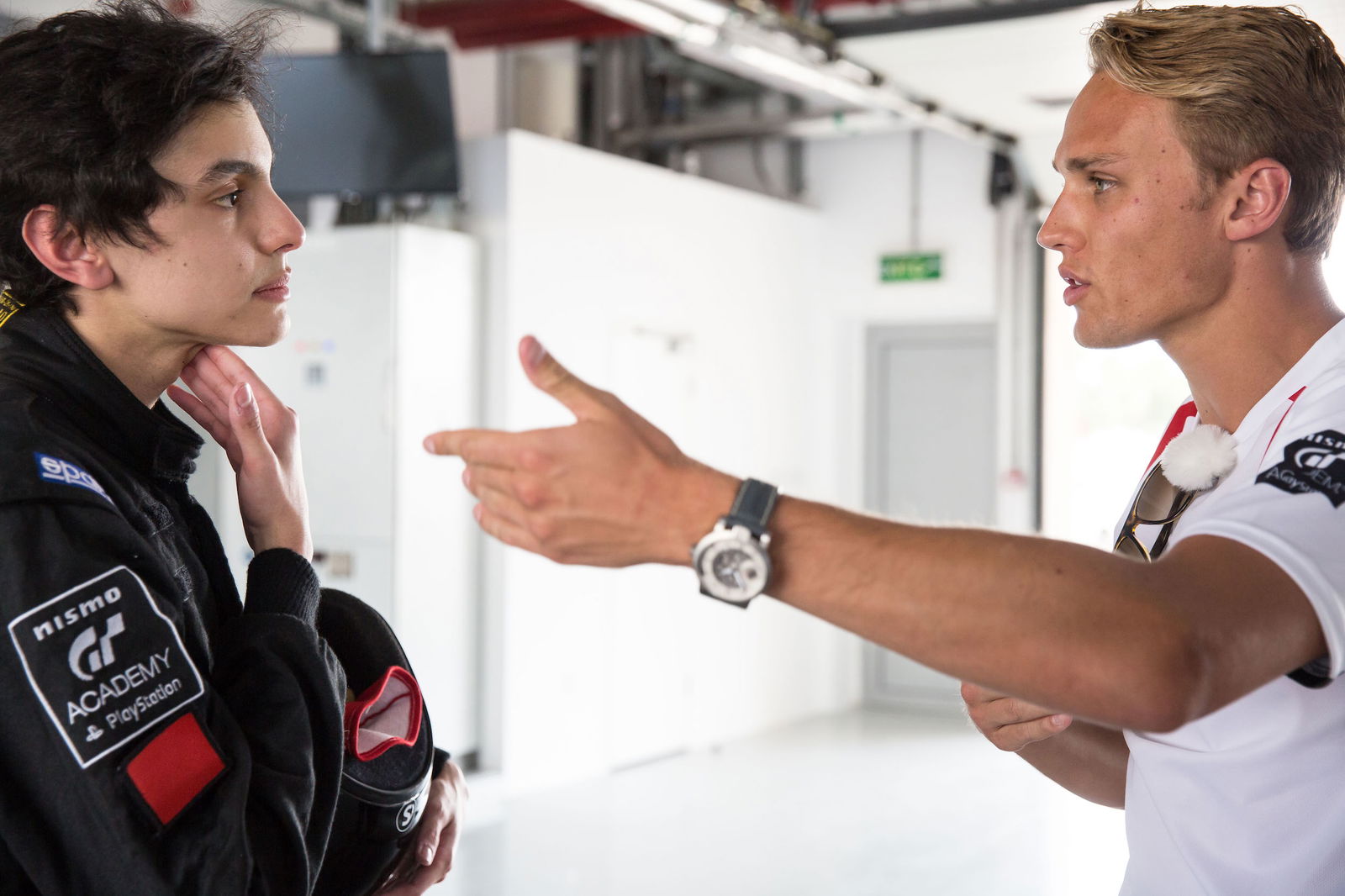
With the relentless tests and the pressure of victory hanging over their heads, the drivers are beginning to learn how vital it is to have mental strength as well as technical ability. Mathieu told me that while waiting for the green light while drag racing, he nearly let his nerves overcome him. At that point he convinced himself to just enjoy the event and forget about the pressure as much as possible. It worked.
On the Bridge to Nowhere, Mathieu faced off against the guy both he and mentor Max described to me as the Brits’ best driver. Mathieu consistently nailed his runs, but his opponent had a small crash in his first run, and then started trying too hard to make up for his mistakes. He lost out to Matt, and was ultimately sent home. It’s another example of the ruthless nature of the competition, but there are no complaints from any driver here.
The GT-R street race was the last event before I showed up, and as I landed into Abu Dhabi with the sun beginning to rise, everyone was still sleeping off their day on the bridge.
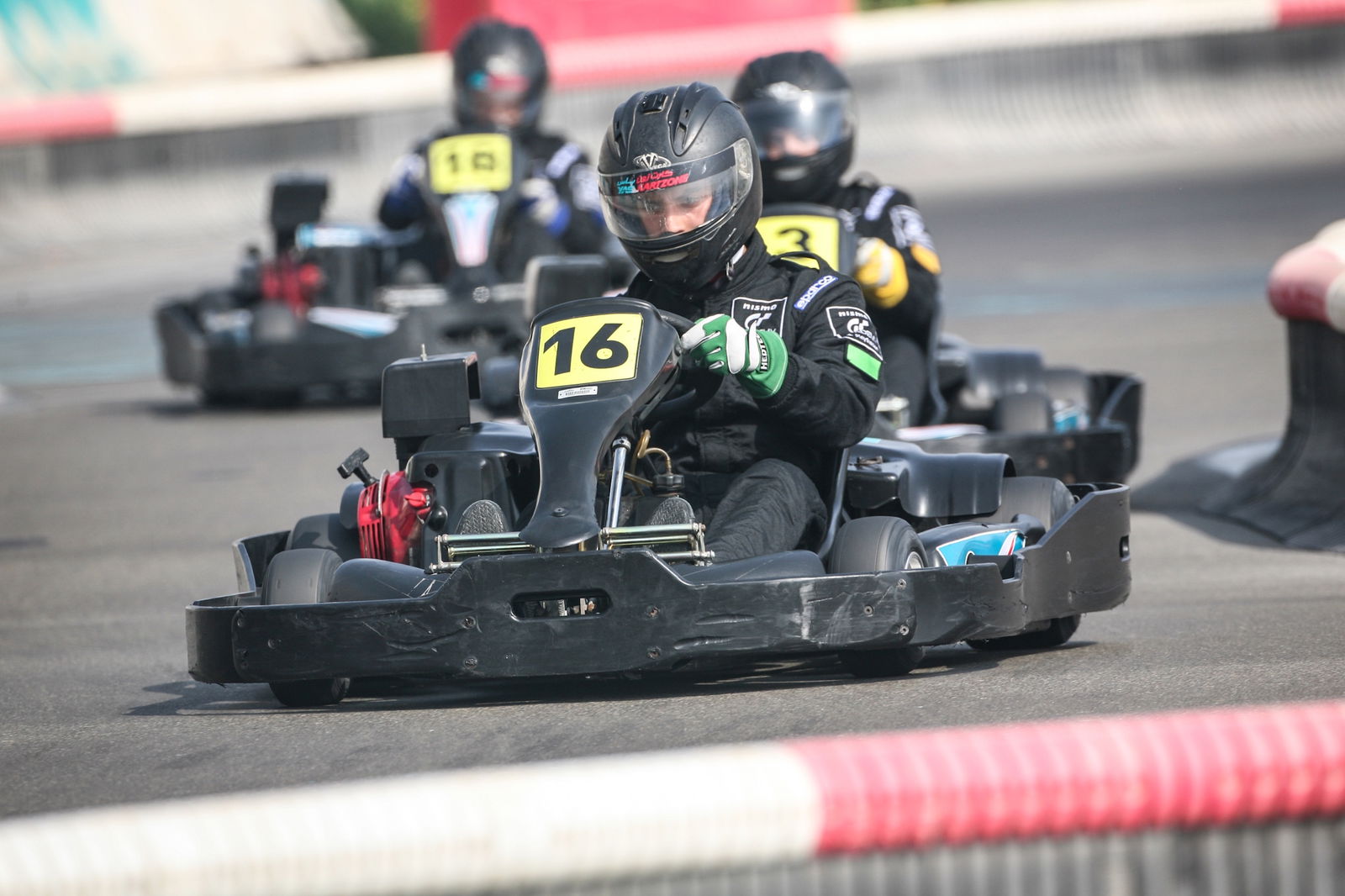
When I first meet the teams, it’s still bright and early on a Saturday morning, and they all look a little bit broken. The best part of a week at race camp has left them physically and emotionally drained, but most seem confident as they head out on to Yas Marina’s kart track. The competition here won’t result in anyone being sent home, but the mentors are paying close attention to how their drivers handle the karts.
With the sun rising in the sky and the humidity bordering on unbearable, the kart race is over, and the Brits are frustrated. An unwell kart in qualifying put them at the back of the grid, and they didn’t make much progress from there. Still, it’s time to show that mental strength and come back stronger, as we’re now in the air conditioned confines of a car and heading due south to our retreat in the desert.

The road is dead straight, the scenery is somehow monotonous and captivating in equal measure, and the memories of karting are left wilting in the heat haze behind us. After two hours of driving in a straight line, the sat nav awakens from its slumber to send us left, across the dunes and officially into the middle of nowhere.

Our base camp out in the desert is the Qasr al Sarab hotel. Actually, hotel is doing it a disservice, this is more like a small village. It looks like it was modelled on mythical, Biblical castles, and stretches off in every direction beneath valleys cast from sand dunes. It’s the epitome of UAE’s ‘we can, so we will’ attitude; it might be on the fringes of the infamously desolate Empty Quarter (Rub’ al Khali), a 1000-kilometre long, 500-kilometre wide sand desert, but it has hot and cold water, well stocked luxury restaurants, and super fast internet.
Not that this matters to any of our unfortunate competitors. This might be their base during the day, but they’ve just been taken for a ride on a camel and told they’re sleeping in Bedouin tents tonight. Sounds cool, but it was anything but. Ben Bishop, Britain’s finalist, said it was the worst part of the whole week: “Although an amazing experience, sleeping in a tent there overnight was not enjoyable at all. It was so humid at night with no passing breeze through the tent that the majority of contestants slept outside in the open. We were all covered in sand with nowhere to shower or wash.”

With their horrendous night in the desert behind them, the final three drivers from each region were then faced with one of the most demanding in-car tests yet: a sand dune hill climb. As the drivers psyche themselves up for what’s ahead, I’m in the back of the Patrol with Max, who has the unenviable job of sending one of the hopefuls home after their runs.
It’s not just the heat that’s making life difficult, though. The extreme terrain is taking its toll on the Polaris buggies, with two of the three taking severe damage as they jump across the desert. The trickiest part of the run is not bogging down at the start, and after kicking plumes of sand particles into the sky all three of the Brits get away well. From there in, it’s all about keeping momentum flowing.
With just one day of the adventure remaining, three had to become two, and it was sim racing addict Fabio Assuncao who was cut.

With the desert behind us, it was back to the Yas Viceroy hotel that straddles the Yas Marina circuit. In the ultimate ‘gamer to racer’ twist, the remaining two drivers in each team would have to compete against the other regions in a race on Gran Turismo 6. The result of the race would then determine how the grid would look in the final race out on the real life Yas Marina circuit the next evening.
The Brits put in a good qualifying session, and Mathieu absolutely nailed his race, putting the Brits in first place. Ben took over and held the lead to put them on pole for the next day. It was an incredibly tense race, and it showed exactly why these guys got to the final - with no preparation and no assists, they were flung onto Silverstone and had to be absolutely on it immediately. Pretty much every driver nailed it.
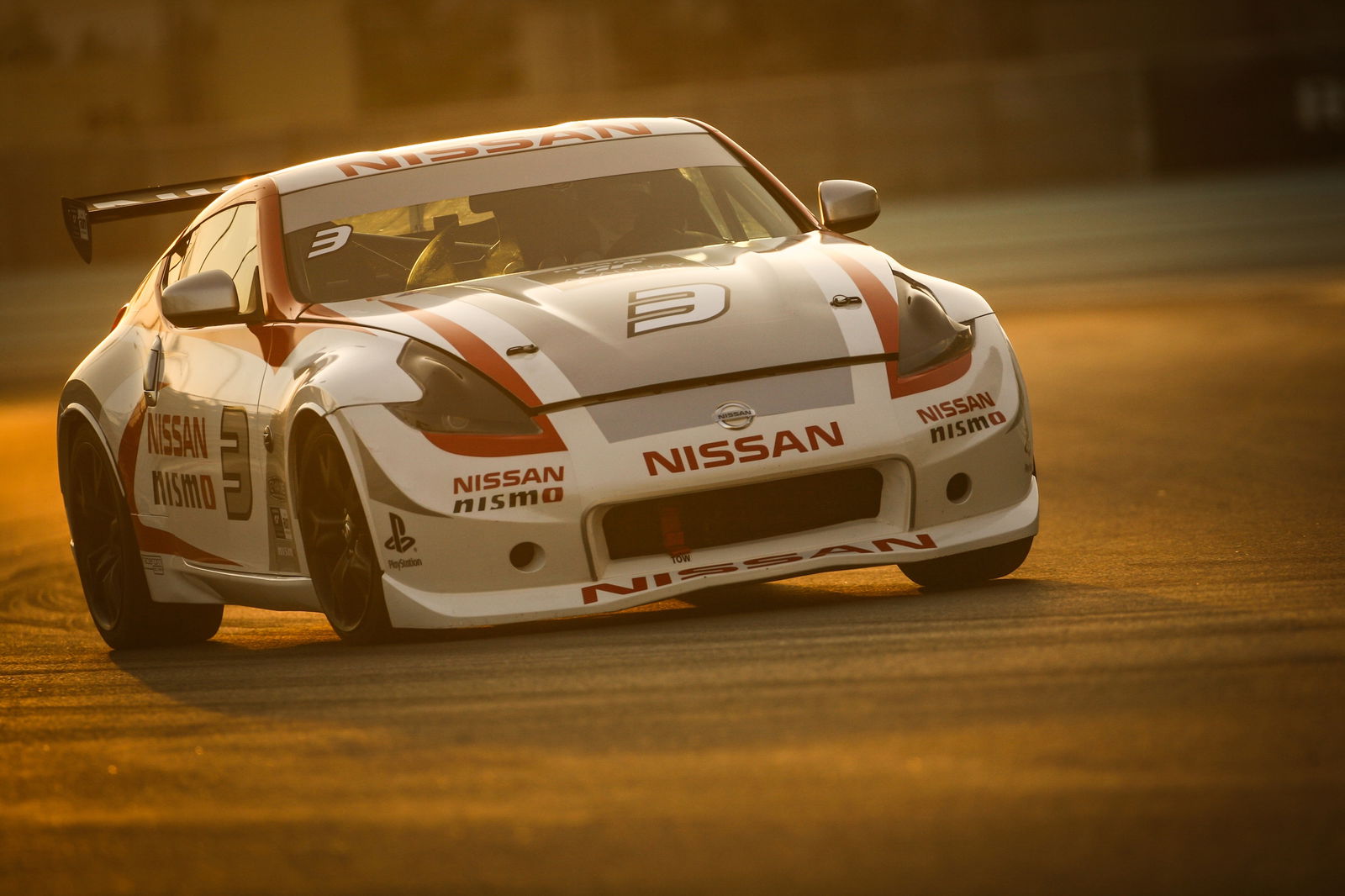
The next day, it was all about the big final. Each driver would have a Nissan 370Z Nismo race car, and would have just six laps to get to first. Yeah, you read that right, six. Each lap took a little over a minute, meaning that months of practicing in the game and a week of intensive competition would come down to less than ten minutes of racing.
It seems a little unfair, especially given the fact that the guys at the back would have almost no chance of succeeding - I totally get that Nissan and PlayStation want to shine a light on the ‘gamer to racer’ aspect, but throughout this whole experience it feels like we’ve been sacrificing the chance to end up with the very best drivers getting contracts in order to make exciting television.
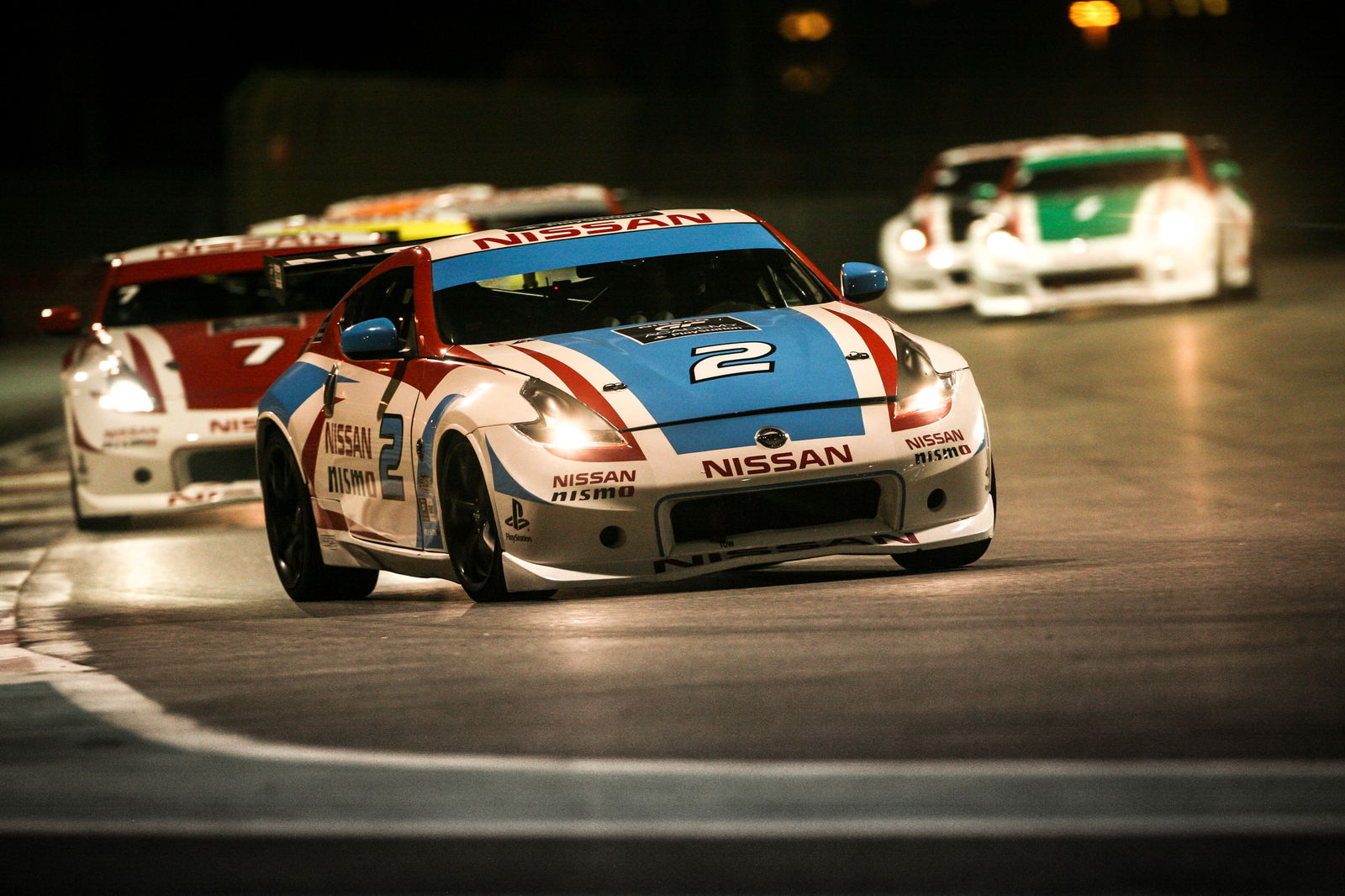
Britain’s Ben Bishop was in the car on pole, having beaten Mathieu Thornton to the final seat. Heading into the first corner, Romain Sarazin of France crept up the inside and stole the lead. For the next six laps, Ben was so busy concentrating on his pursuers that he wasn’t free to mount a comeback on Sarazin.
As a train of cars bunched up behind Bishop, there was much excitement in the middle of the pack. Italy’s finalist was the driver of the race, capping off a stunning drive from the back of the grid, by pulling off the pass of the race in a fast right-hander, completely catching his opponent by surprise.
However, despite the pressure of an early lead, Sarazin held on to first to take victory, and with it the Nismo contract.
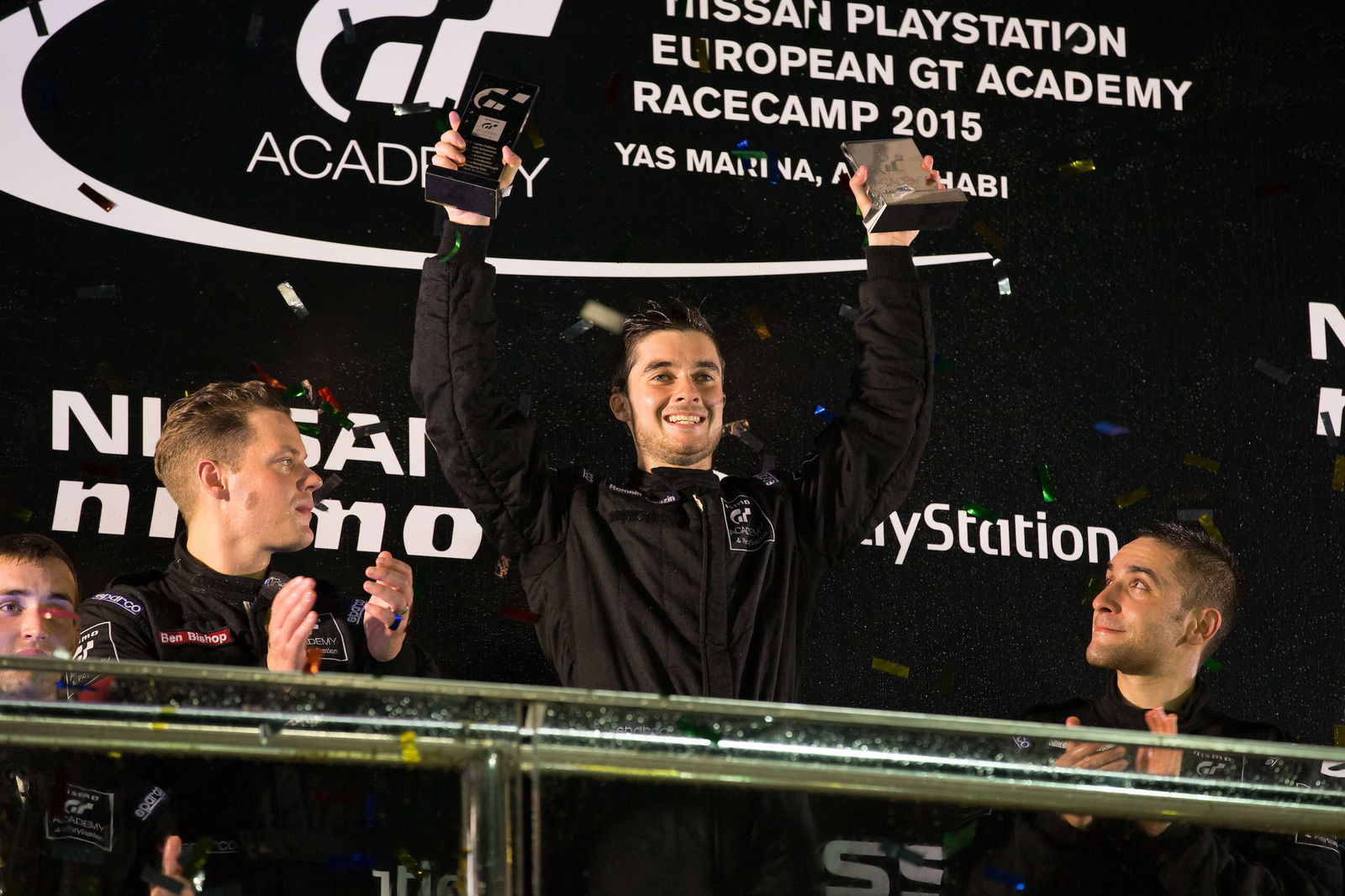
Once back on home soil and with time to reflect on my time with the finalists, I felt there were a few key takeaways from the experience. To start on a negative, it feels like the GT Academy team are so focused on making the television show and the competition a success, they’ve sacrificed a little of what makes this such a legitimate route to racing.
The events were varied and cool to look at, but this year the drivers didn’t get a huge amount of seat time to really progress and show what they can do. A number of competitors told me they’d like to see more of the judges’ input affecting the outcome in the future if Nismo truly wants the ‘best’ driver to win. That’s not to take anything away from Sarazin - he wouldn’t have made it as far as he did without talent.
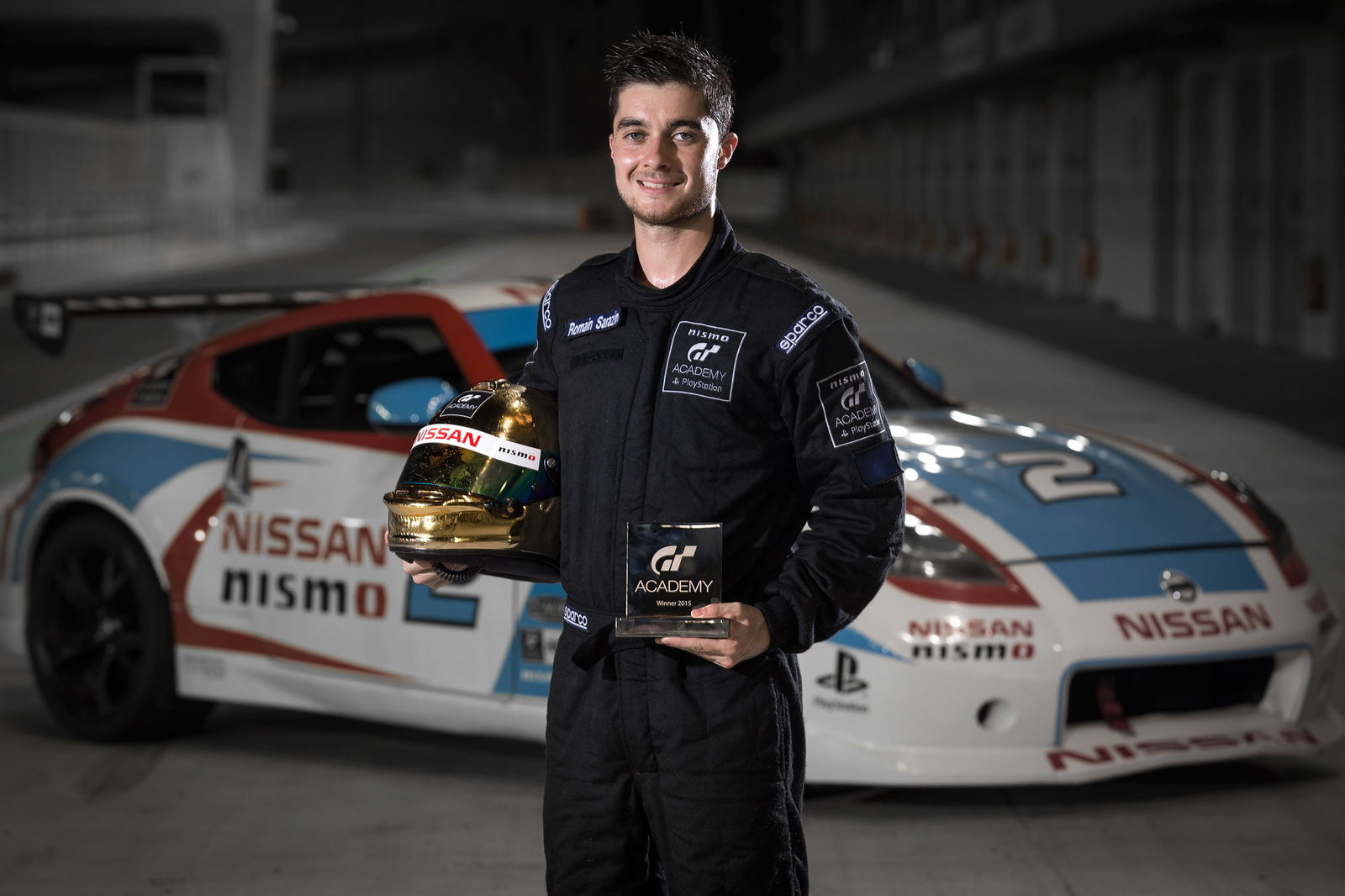
The other side is far more positive. This is still a fantastic opportunity to give fast drivers opportunities they would never normally have access to; motorsport is notoriously expensive to run in, and that puts a lot of people off. This kind of competition should be applauded for making racing accessible to more people.
Also, if you think there’s no way you could hold your own and it’s putting you off entering, think again. Remember that most of these guys have zero experience driving fast in real cars; I was lucky enough to take part in a kart race, and my time would’ve put me in the upper-middle of the GT Academy field. It’s a very level playing field for the most part - apart from one Frenchman who was a very experienced karter and was consistently two seconds faster than anyone else, yet that wasn’t enough for a place in the final. All you need is the commitment to keep trying for that fastest lap in the game, and you’ll get that chance to prove yourself in the real world.

The future of GT Academy is an interesting one. It’s no secret that Gran Turismo 6 is hopelessly out of date now, especially due to the fact it’s on a previous generation console. Racing simulations have entered a golden era, with the likes of Project Cars and Assetto Corsa really taking the fight to the established names.
Next year’s Academy will be huge for both Nissan and PlayStation. Along with Polyphony Digital, they have to come up with something that proves the competition is still relevant, and with the announcement that the new Gran Turismo Sport game will be released next year, the team will be hoping that this is an adequate enough stop gap before GT7 hits shelves late in 2016. The GT Academy qualification takes place in a standalone download, so there’s every chance it’ll be made available on PS4 with early GT7 code.
Whatever happens with 2016’s GT Academy, the competition should endure. It’s a fantastic thing, and provides opportunities that most would never imagine within their reach. By giving drivers with talent access to race cars instead of those with big bank accounts, Nissan is ahead of the game. Here’s hoping it continues.

Comments